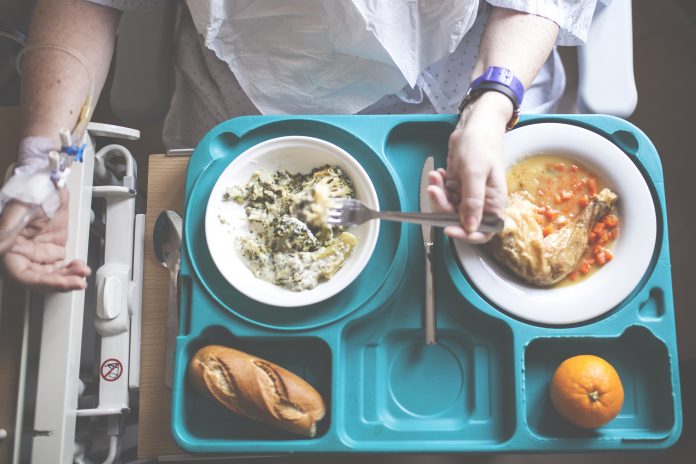Tom Wright, Head of Digital Engagement at NDL, discusses the various ways in which technology can improve the hospital food ordering system
“In the 2020 Independent Review of NHS Hospital Food, Prue Leith, who led the review, recommended that digital meal ordering solutions should be implemented in hospitals by 2022. Utilising technology in patient meal ordering would, in turn, allow staff hours to be used more efficiently, reduce food and paper waste and – crucially – increase patient satisfaction.
Demonstrating it is a step-ahead of the curve, University Hospitals of Morecambe Bay NHS Foundation Trusts (UHMBFT) adopted this system back in 2017. Following the digitalisation of its patient meal ordering service, the Trust has halved its previous food waste – an estimated saving of £26,000. It also reduced printing costs by £190,000 annually, replacing the 400 pieces of paper previously used on a ward each day, with a single electronic screen.
The Patient Meal Choices App
The new program, named The Patient Meal Choices App, integrates with the Electronic Patient Record (EPR) and Bed Management system, allowing any changes of bed location to be tracked throughout a patient’s hospital stay. Meals can now be cancelled or adjusted as their circumstances require, in response to their hospital journey. Once an order is placed, the kitchen is automatically updated with a new tally on its display screens, allowing catering staff to see the live status of meal orders.
UHMBFT serves close to a million meals across its 32 wards annually and previously used a printed paper system to collect meal orders for the following day from their patients. Completed cards would be collected, delivered to the hospital kitchen, and manually processed before service. Specialist orders would also be flagged manually for a separate chef to prepare. The overall process would take an average of 2 hours per meal. In the interim, patients may have been discharged or transferred between wards and food that they had ordered the previous day would subsequently go to waste. This resulted in over £1,000 of food waste weekly.
Identifying that the service could be improved through digitalisation, the Trust opted to build a native mobile app that can be used on any mobile device with or without signal, with information captured and shared in real-time interdepartmentally.
Working closely with NDL Software, the Trust used an existing ‘MX’ mobile app template from its suite of digital transformation tools, available to the NDL community. Having already used the ‘MX’ app template across other projects, the Trust already knew how easy and adaptable the process was. NDL’s low-code tool allowed them to build an app which incorporated the whole meal-ordering process, inviting the catering and IT team to build something specific and beneficial for all involved.
With the initial trials and roll-out complete, work has begun on the second phase. Included in this is the incorporation of meal apps, in which dieticians are able to track a patient’s food and calorie intake. This can be used to aid in their recovery process. Additional features include monitoring which food is wasted, and which is most popular, allowing for improved and strategic menu planning and thus further reducing food waste and increasing financial savings.
Additionally, reducing the previously admin-heavy task means that now, nurse’s time can be better spent elsewhere. Patient meal satisfaction has significantly increased due to a reduction in the time between the ordering and the delivery of food. Further results find that without the hassle of delivering, chasing and writing the paper forms, clinicians’ time is used more efficiently, with an hour saved each day.
Healthcare Assistants now take patient meal orders on a digital tablet much closer to their mealtime. The digital process allows real-time updates on the patients, hugely improving communication between wards, kitchens, patients, and clinicians, who can update with dietary requirements, portion sizes and allergies as necessary.
Hospitals are constantly under pressure from all angles, with patient care as the core goal. The Patient Meal Choices App is a leading example of how technology can lend itself to running hospitals more efficiently, and overall improvement in patient satisfaction. Quick, easy and cost-effective to develop, it demonstrates a really positive role for technology in the care of those in need.
In light of the recent government guidance on digital meal ordering, UHMBFT sets a standard and allows us to reflect on the positive results at several stages ahead, both from a patient care and an environmental perspective. Already, it’s encouraging to see that more trusts are looking to implement similar systems.”











